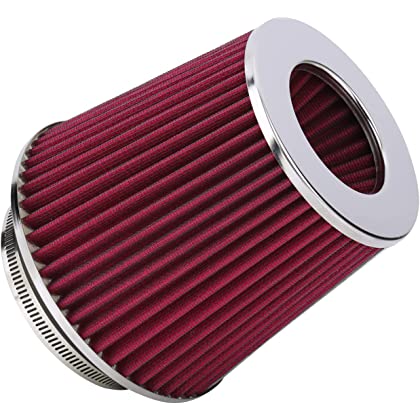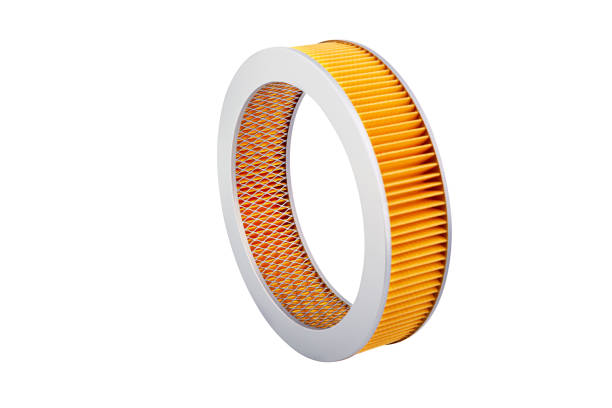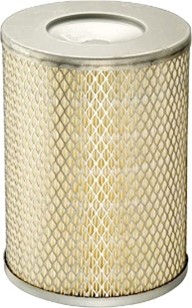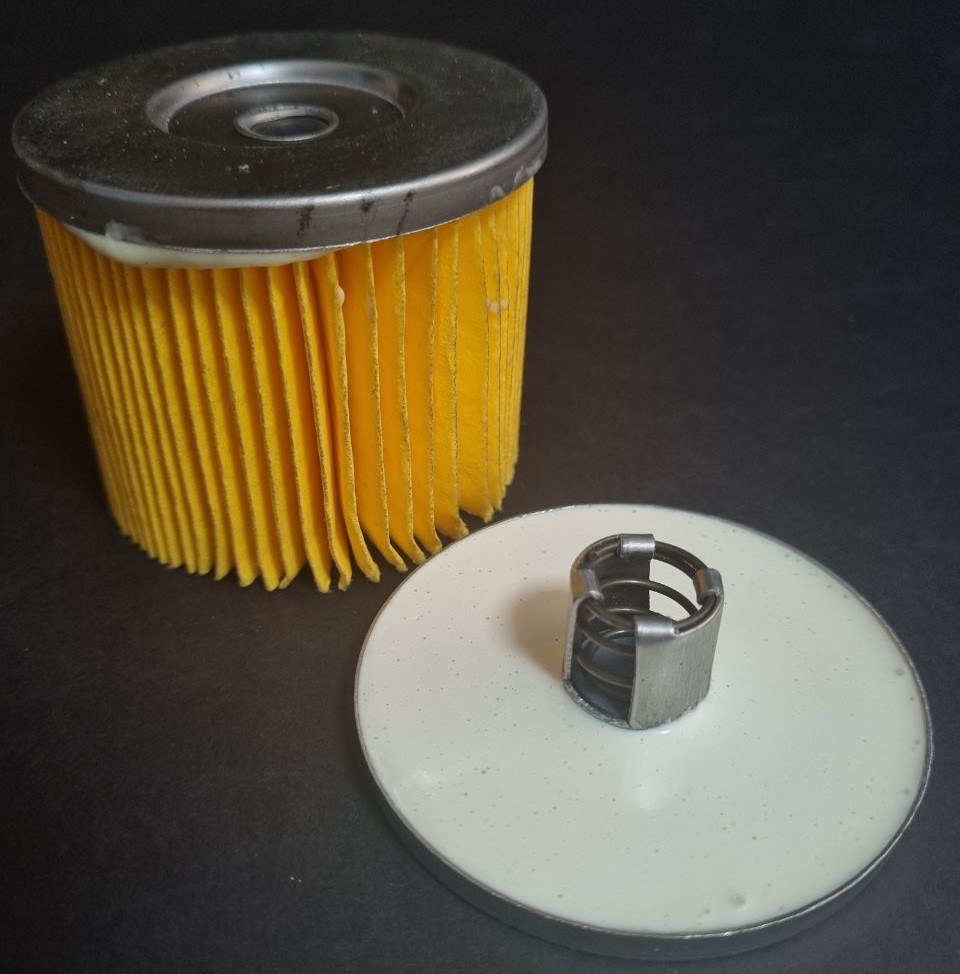
Heavy-duty air filters for construction vehicles need to withstand harsh operating environments. Many applications require ....
high temperature and chemical resistance. As a result, manufacturers use adhesives to fabricate numerous filter components to assemble the filter media itself, bond the filter media into a frame or end cap or install the gasket.
There are various filter adhesives; but in the following we are going to discuss more about polyurethane filter adhesives.
When the filter is assembled, the adhesive is applied onto the frame by flat coating and the ends of the pleats are embedded in it. This gives the filter medium the necessary solidity because filters are frequently exposed to heavy deformation during installation and change, especially due to the increasingly more compact engine compartments of cars. This means the shape of the filters must remain unchanged over their entire life, even when the material compound is exposed to mechanical forces or high temperatures.
Adhesives types in filter fabrication
For decades, adhesive manufacturers have been busily pioneering and improving a range of adhesive technologies and today offer filter manufacturers an impressive array of adhesive types to meet varied needs in the plant.
- Thermosetting adhesives
Thermoplastic materials are capable of being repeatedly softened by an increase in temperature and harden by a decrease in temperature. This transition is marked by a particular glass transition temperature, Tg, for each (amorphous) polymer. This transition involves physical rather than chemical changes and therefore enables shaping of such polymers into articles by molding or extrusion processes in the softened stage. For crystalline polymers, the crystallization temperature, Tcr, and the melt temperature, Tm, constitute important thermal parameters defining the formation and the destruction of the crystalline structure.
Thermosetting adhesives typically cure through the chemical reaction of two components or exposure to heat. Once cured, the adhesive becomes inert. In fact, thermosetting materials consist of three- dimensional cross-linked networks, which leads these resins become infusible, insoluble materials. As a result, these adhesives tend to have good heat and chemical resistance and are well suited to applications that require strength under varied conditions. Two common thermosets are epoxy resins and polyurethanes.
- Epoxy resins
One- and two-part epoxy resins are widely used in filter fabrication for a variety of applications. Most are very rigid in the cured state and adhere well to metal. Although they offer high temperature and chemical resistance, epoxy resins can be relatively costly and often cure slowly.
- Polyurethanes
Adhesive manufacturers offer a broad array of polyurethane adhesives, in varying colors, cure rates, viscosities and hardness levels. Although available in one-part formulations, two-part polyurethanes are better suited to filter applications. Whereas one-part formulations rely on moisture in the substrates and air to cure, two-part polyurethanes cure through a reaction when the two components are combined.
Most two-part polyurethanes cure at room temperature but can be heat accelerated. Harder polyurethanes can be used to assemble the filter media into a metal or plastic frame or end cap or cast as those components.
Generally, polyurethanes lack resistance to some chemicals and solvents so are best used with water, air and oil filters.

- Thermoplastic adhesives
Thermoplastic adhesives, including plastisols and hot melts, do not undergo as much of a change during the curing process as do thermosetting adhesives. As a group, these adhesives lack the chemical and heat resistance as well as the strength of thermosets. However, their one-part formulation renders them affordable and convenient to use. In other words, applying adhesives for industrial uses is not always as easy as picking up a bottle of glue and squeezing. Two-part adhesives require mixing, and many adhesives used in filter fabrication require separate dispensers.
Thermoplastic adhesives are available in liquid or solid forms. In liquid form, they are dissolved and/or dispersed in solvent, which needs to be evaporated to obtain the solid form of the resin and, consequently, proper bonding.
Plastisols
Filter manufacturers long have used PVC plastisols as an adhesive and to cast. They require no mixing and can be pumped directly from a drum. They also cure through exposure to high heat for at least 10 minutes - although heating these chemicals is a risk to the environment, and the energy costs of operating an oven soon erodes any savings from the lower cost of plastisols.
Conventional hot melts
Conventional hot melts are used to laminate the metal to the media in air filters. Many hot melts are made from the same material as one of the substrates used in the filter itself, alleviating concerns about chemical compatibility. These hot melts typically are not suitable for use at elevated temperatures.
Polyurethane reactive hot melts
Thermoplastic and aqueous forms of the polyurethane-based adhesives are also available. Thermoplastic polyurethanes are soluble polymers, depending on the starting materials and differing greatly in their degree of crystallinity. For adhesives with high crystallinity, heat activation is required for adequate bonding resulting in high peel strength and high softening temperatures.
Polyurethane reactive hot melts combine the advantages of rapid-setting hot melts with the cross-linking rigidity of polyurethanes. They ultimately cure under atmospheric humidity.
Aqueous forms of polyurethanes are applied with the use of compounded surfactants. These types of adhesives are typically used for bonding plastics, rubbers, leather, wood, vinyls, and metals.
Cyanoacrylates
Cyanoacrylates are very fast-setting, one-part adhesives frequently used to bond rubber or neoprene gaskets onto a filter. They cure immediately when exposed to moisture but do not fill gaps, requiring both substrates to be in close contact. Cyanoacrylate adhesives are the cross-linked versions of acrylic- based adhesives, cured by catalyst reactions.
Solvent- and water-based adhesives
Solvent-based products dry quickly, and the solvents promote good adhesion to many substrates. Safety and environmental restrictions are two drawbacks to flammable solvents. Most are formulated with flammable solvents, which require caution in use, and might have high VOC levels.
Water-based products are an attractive alternative to solvent-based adhesives. Although conventional water-based products dry more slowly than solvent-based, special equipment can accelerate drying time. And some newer formulations bond instantly.
Five considerations in selecting adhesives
In the end, the filter manufacturer can begin the adhesive selection process by answering five simple questions:
- Where will the filter be used? (Service temperature)
- How much adhesive is needed? (Cost for purchasing adhesives)
- Are there any environmental or safety concerns? (VOC regulations)
- Has the adhesive been tested? (Evaluating physical properties such as hardness, viscosity, and pot life)
- Which adhesives are likely candidates? (Some adhesives might be lower in cost than others but require high-temperature ovens)
In other words, the selection of the appropriate adhesive system must be made taking into account the manufacturing process and the characteristics required from the end product when in actual use. The adhesive should neither soften nor dissolve. A hot melt adhesive could weaken or melt in a filter with a high service temperature.

Two component polyurethane filter adhesives have been designed in Imen Polymer Chemie Co. for assembling air and oil filters; it has to be mentioned that since they contain no water or solvents, they tend to shrink very little as they cure. Feel free to contact us for more information.






